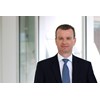Global crude storage has a powerful influence over market dynamics
Analysing the impact of crude storage on global oil market trends
4 minute read
Alan Gelder
SVP Refining, Chemicals & Oil Markets

Alan Gelder
SVP Refining, Chemicals & Oil Markets
Alan is responsible for formulating our research outlook and cross-sector perspectives on the global downstream sector.
View Alan Gelder's full profileJose Pablo Gonzaga-Rodriguez Moranchel
Consultant, Oil Markets

Jose Pablo Gonzaga-Rodriguez Moranchel
Consultant, Oil Markets
Jose Pablo is an energy consultant with over four years of experience analysing the oil markets
Latest articles by Jose Pablo
View Jose Pablo Gonzaga-Rodriguez Moranchel's full profileJim Venhoff
Head of Oil Assets, Commodities Trading Data & Analytics

Jim Venhoff
Head of Oil Assets, Commodities Trading Data & Analytics
Jim oversees oil assets operations for our Commodity Trading Data & Analytics team.
Latest articles by Jim
View Jim Venhoff's full profileCrude oil storage levels affect global market trends. During the Covid pandemic, for example, inventories were an important influence on crude oil prices, as falling demand resulted in high levels of floating storage. China’s example is particularly notable; as the country eased its lockdown restrictions, storage volumes fell dramatically – and this story was repeated to a lesser extent around the world. While the pandemic pressure has reduced, other factors such as geopolitics, policy changes, voluntary production cuts and concerns about weak economic growth are now having a significant impact on oil prices.
This research provides a comprehensive analysis of global crude storage and the key drivers influencing it. We also present some Wood Mackenzie solutions, including data-driven perspectives on the OECD’s commercial crude stock outlook.
Download an extract of the report for more details and read on for a summary.
Interestingly, the data from crude storage terminals shows more responsive behaviour than refinery terminals. This may be because refiners tend to store on a ‘days throughput’ basis, with volume increases being triggered by higher throughputs and new refineries coming online. Additionally, Asian refiners are receiving greater volumes of crude oil from more distant sources, so tend to store more to off-set the risk of supply disruption.
Confidence and caution from the US
The US began refilling its Strategic Petroleum Reserve (SPR) in the second quarter of 2023 after ending the release of the 26 million barrel scheduled crude sale. The US Department of Energy (DoE) expects to receive 6.3 million barrels of sour crude in August and September and initially announced plans to buy an additional 6 million barrels for delivery in October and November. The Biden administration withdrew the offer to buy the extra barrels, however, citing current market conditions and recent increases in crude prices.
US strategies for filling Strategic Petroleum Reserve (SPR) sites
The US plans to fill its SPR sites in three different ways. These actions should allow the SPR to have the same volumes in reserve by the end of the 2027 fiscal year than it would have had if emergency barrels had not been sold in 2022.
- Through direct purchases. The Biden administration has offered to buy over 6 million barrels of US sour crude and receive it in 2023. These will be purchased through revenues from the emergency sales in 2022.
- Through the exchange programme, 32 million barrels were part of the international barrel exchange program in late 2021. Recipients are scheduled to return them between 2023-2025.
- By avoiding legislative sales. The US Congress has cancelled the mandated sale of 140 million barrels scheduled for 2024-2027. Legislative sales can only be agreed in case of supply disruptions.
Crude prices have been affected by recent events
In 2020 and 2021, crude storage significantly impacted the price of oil, as demand was weak. Inventories heavily influenced crude pricing, and an inverse relationship resulted, with the Brent crude price plummeting and crude storage volumes peaking around the world. As the pandemic came under control, the crude stocks influence lessened, and crude prices were impacted by other factors, including the sanctions against Russian crude exports during the Russia-Ukraine war. In the first half of 2023, crude stocks have increased, but US commercial stocks are declining in Q3 which is adding to the pressure on prices. This is outlined in the chart below.
Discounted Russian barrels boosted India’s inventories
In June and July, India’s purchases of Russian crude slowed as the discount on Russia’s barrels eased. Russia’s recent export cuts coincide with weaker demand in India, driven by reduced consumption due to the monsoon season and refinery maintenance amongst other factors. India has been a significant buyer of crude oil from Russia, along with China, since the Russia-Ukraine war. Sanctions against Russia from the US and EU have contributed to a more attractive price for Russian crude – very appealing to Indian refiners. Since 2022, Russian crude has been a major source for Indian refiners, improving refining margins at a time when India was battling high inflation and rocketing fuel prices. .
Non-OECD crude storage grows in Q2 2023
China has emerged as the main driver of crude stock increases this year, supported by cheap Russian barrels, and higher crude import quotas. In the first quarter of 2023, we have seen a gradual increase in crude stock levels from non-OECD Asia countries, and this has been backed, in the main, by China. Throughout 2023, China has focused on buying more crude to take advantage of low prices, and building enough inventory to meet demand from the country’s post-pandemic recovery.
Wood Mackenzie’s new service, Global Oil Storage Monitoring (GOSM) has been created and calibrated using our own historical tank-level data and satellite technology, enabling us to access harder to monitor areas around the globe. To understand how key storage assets affect the oil balance equation and more, head to Global Oil Storage Monitoring.
In the report extract we provide a comprehensive analysis of crude storage globally, and the key drivers influencing it. Fill out the form at the top of the page to learn more about:
- The impact of Russian crude on Indian crude runs and storage
- Global crude storage by refineries and port terminals OECD and Non-OECD crude storage granularity
- Wood Mackenzie’s crude storage coverage and solution










